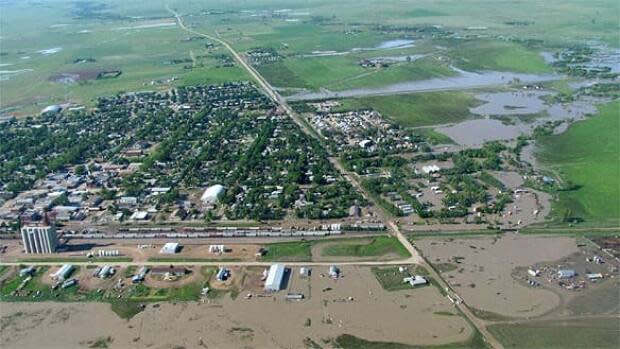Why Key Lake is the 'cold pole' of Saskatchewan
Key Lake, Sask., is often recorded as the coldest place in Canada on specific days, despite it not being as far north as some other communities.
Key Lake is about 570 kilometres north of Saskatoon. David Philips, senior climatologist for Environment and Climate Change Canada, said there are two major factors that contribute to Key Lake consistently registering as the coldest place in Canada when it comes to daily temperatures.
"The first is topography," Phillips said in an interview with CBC Saskatchewan's The Afternoon Edition.
"Wherever the thermometers are housed might be in a little bit of a dip."
According to Phillips, because cold is air heavy and dense, it descends and remains in low spots. This means if the weather is being tracked in a low spot the temperatures might be a bit colder.
He also mentioned that a soil difference could be responsible.
"Key Lake has sandy soil and sandy soil is notorious for having wide ranges of temperature. During the day it can really warm up but at night it cools down."
Phillips said that on average, more northern places like Colin's Bay and Uranium City are colder than Key Lake.
"There are singular moments when Key Lake is the weather superlative of a cold pole in Canada, but on average it doesn't really come out that way."

On the other end of the spectrum, Maple Creek, Sask., often records very warm winter temperatures compared to the towns around it. Maple Creek is about 350 kilometres southwest of Regina, close to the Alberta border.
Phillips said Maple Creek is deserving of the title "Miami of the North" primarily because of Chinook winds.
"Because Maple Creek is so close to the Saskatchewan-Albertan border, those Chinook winds can blow right across the prairies."
These winds warm up the air in the area. The tables turn in the summer, however, with Maple Creek often having cooler summers than the rest of the province.
"Sometimes the cold air will push in and dam up against the Cypress mountains and flow back into places like Maple Creek," Phillips said. "It has that oddity of being the warmest spot and at night be the coolest spot."

